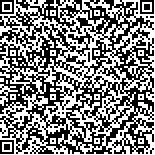下载中心
优秀审稿专家
优秀论文
相关链接
摘要

重力卫星搭载的加速度计用于测量非保守力。加速度计的偏差和标度因数在空间随环境变化而缓慢变化,需要实施外部标定,以方便正确应用于数据处理。很多文献研究了动力学标定法、定轨标定方法、能量标定法等,在快速性、高精度性等方面有待提高。本文提出了加速度标定方法,建立数学模型,用于重力卫星的加速度计标定。结果表明,该方法是一种有效的标定方法,在目前的数据条件下,其标校达到10-8—10-9 m/s2水平,标校效果X方向参数最优,Z轴次之,Y轴最差。加速度标校法受到先验地球重力场模型的影响,需要采用迭代方法,逐步逼近真实的加速度计参数。如果提高GNSS轨高产品采样率,可提高总加速度计算精度,从而提高加速度计的定标精度。加速度标定方法是一种有效、快速、精度较高的标定方法,提供精确的标定参数,可以在重力卫星数据处理中使用。
Satellite gravimetry is a technique of surveying the earth’s gravity and geoid and their changing signal. The data are used in geodesy science, environment monitoring, seismic, hydrology, and ocean science.
An accelerometer is a core payload in the satellite-to-satellite tracking model or satellite gravity gradiometry and is used to sense non-gravity forces. An accelerometer cannot survey a non-conservative force absolutely for its bias, drift, scale, and second-order terms. Parameters change with the environment, status, and time. Thus, the accelerometer should be calibrated and validated.
The accelerometer STAR is loaded on the Challenging Mini-Satellite Payload for Geophysical Research and Application (CHAMP) satellite and has an accuracy of 10-8—10-9 m/s2. The SuperStar accelerometer is loaded on the Gravity Recovery And Climate Experiment (GRACE) satellite, and its accuracy is improved to 10-9—10-10 m/s2. The GRADIO accelerometer is loaded on the Gravity field and steady-state Ocean Circulation Explorer (GOCE) satellite, and its accuracy is 10-11—10-12 m/s2. With the improving accuracy, additional requirements are needed to calibrate the accelerometer.
In terms of data type, the three calibration methods are as follows: The first method is direct calibration, where non-gravity force model data are used to compare the output of the accelerometer. The second is the dynamic method, where GNSS data are used to determine the satellite orbit and the accelerometer bias parameters together. The third is the integrated method, where all data are used to determine the total coefficients of the gravity model and the bias of the accelerometer. In addition, the energy domain, the cross point, and the gravity up-continue methods are used to calibrate the accelerometer. The energy domain method is based on persistence energy. The dissipative energy is deduced by the satellite position and velocity. Then, the parameters of the accelerometer are evaluated from the dissipative energy. Its accuracy is not better because the dissipative energy cannot be calculated precisely given the error of the satellite position and velocity. The cross point method is based on the hypothesis that the force of satellite, which crosses a point twice, is equivalent. Evidently, it is an inaccurate method. The gravity up-continue method is used to calibrate the gravity gradiometer. All these methods have been used to calibrate the accelerometer on CHAMP and GRACE. Results indicate that the dynamic and integrated methods are appropriate for external calibration. A new calibration method called the acceleration domain method is proposed. The calibration method is discussed, and the mathematic model is deduced.
The acceleration domain method is used to calibrate the GRACE accelerometer. Results indicate that the total calibration accuracy is 10-8—10-9 m/s2. The best calibration is that of the X-axis parameters, followed by the Z-axis parameters, and then the Y-axis.
The acceleration domain method effectively determines the accelerometer parameters. The calibration method is affected by the prior earth gravity model. Thus, iterative procedures should be applied. The accuracy of total acceleration, which is calculated from GNSS data, is related to the position sample rate. Thus, if the GNSS data rate is increased, then the calibration accuracy is improved. If the GNSS data rate is 1 s, and the calibration accuracy is 10-9—10-10 m/s2, then the accuracy is improved 8-10 times.

